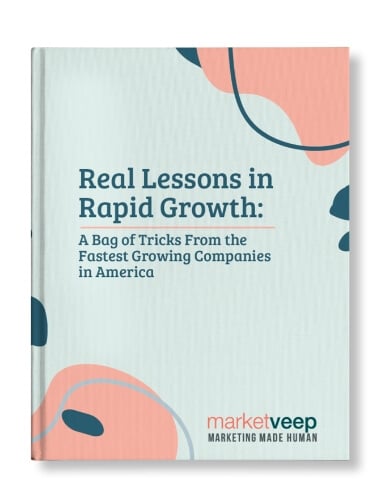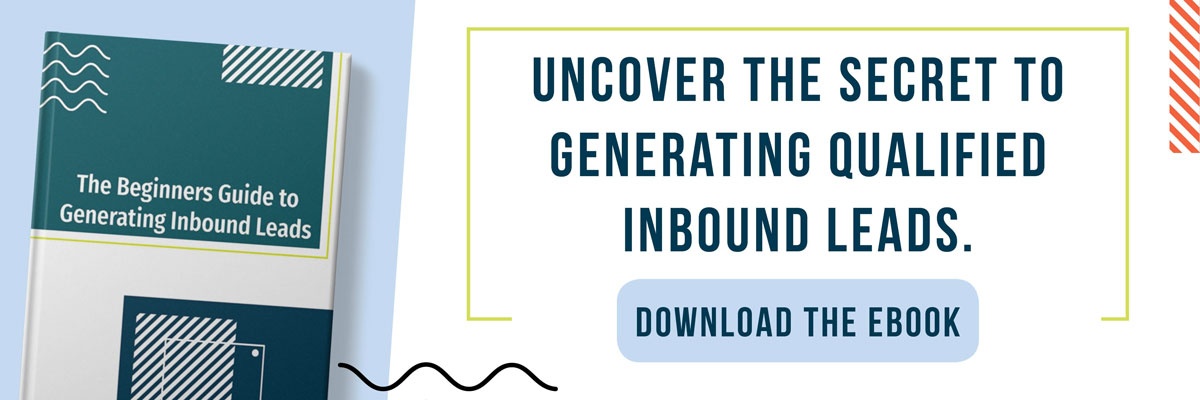Digital Ad Spend and Lead Generation Relationship


By Bill Viau
You need leads to grow, and advertising can generate them. But how do you know whether your digital ad spend budget is making progress or digging you into a hole? Each lead your business generates through ad spend has to be worth more than the initial cost of acquisition, or you’re losing money on the deal. Use these metrics, channels, and strategies to set your lead generation efforts up for a positive Return on Ad Spend (ROAS).
Lead generation is the lifeblood of your business. While there are plenty of unpaid channels to reach an audience — word of mouth, search traffic, email marketing, and a social media presence — a lead generation strategy should include some dedicated ad spend in the lead gen mix.
But in the world of free organic search, how do you know if those promotional dollars are worth it?



Choose Your Channel Carefully
The goal is to gather the most leads for the fewest ad spend dollars. To do that, you’ll need to pick the right advertising medium(s). As you investigate channel options, keep a few things in mind:
- Follow the customer. Where is your target audience? What media sources do they consume the most? What social networks do they use?
- Timing matters. Advertise at times that your customers generally want to buy, not just when you want to sell. You’ll convert more if you don’t need to generate demand — just fulfill it.
- Price isn’t everything. A channel might be cheap, but that doesn’t mean it will be cost-effective in terms of efficiency and lead generation.
Thankfully, you’ve got plenty of channels to choose from. The old standbys — TV, radio, print — are still out there. And they have value for the right kinds of products or target audiences. But these days, by and large, the internet is where it’s at.
Online lead generation advertising is now the largest market for ad spend (the U.S. spent about 2.6 billion on digital lead gen in 2019 alone), and it’s still growing. Digital ad spend actually surpassed TV for the first time in history in 2017. And it’s projected to double the dollars sunk into TV ads by 2022:

(Source: Vox)
In fact, eMarketer research estimated that U.S. digital ad spending would surpass all traditional advertising combined in 2019.
This is fantastic news for lead attribution. Digital ads are, after all, much easier to track and tie to a specific moment and method of conversion than traditional channels. A clear relationship between ad spend and lead generation makes it much easier to accurately calculate ROI, too.
Digital Ad Spend: How is it Priced, and Where’s the ROI?
How is Advertising Priced?
A channel’s price is set by the total exposure or interaction you can expect it to generate. The two most common ways to see the audience of an ad measured are:
- Impression: Every time your ad is shown to someone, you’ve generated an impression.
- Click-Through: Every time a user clicks a digital ad and gets sent to your landing page, you’ve generated a click-through.
Most of the traditional channels are priced per impression because there’s no measurable way for the audience to directly interact with an offline ad. TV, for example, can track the number of screens that are tuned to each channel within the market area. But there’s no guarantee that the audience is paying attention. So how does this turn into a price?
- CPM (cost per 1,000 impressions, or per ‘mille’): This rate is what you’ll pay for every 1,000 people exposed to your advertisement. For example, local TV spots in LA averages a little over $34 per 1,000 impressions.
- CPC (cost per click): Every time someone clicks a digital advertisement and is redirected to your landing page, you’ve generated a click. Typically, clicks are more expensive to buy than impressions because click-through leads are far more likely to convert into customers. Facebook ads have an average CPC of $1.86 to $11.20, for example, which means a thousand clicks would be pretty pricey.
Once you know the price of exposure, you can start to hone in on a budget for digital ad spend. How many impressions do you need to see the growth you want? How many clicks?
This is where it becomes crucial to pick your ROI metrics.
Metrics For Ad Spend
Below are the metrics that will have the greatest impact on your digital ad spend decisions. Use them to track the bottom-line impact of your ad spend on lead gen, revenue, and ROI. Since most channels are priced by CPM or CPC, you need a clear picture of how much revenue each impression, click, or conversion will actually generate. These metrics can tell you how much you’ll need to spend to achieve the results you want.
- CTR (click-through rate):
CTR compares the number of people who view a digital ad to the number who actually clicked it. Take impressions and divide by clicks to get the click-through-rate. - Conversion Rate:
This metric is the next step after CTR. It compares the total people who interacted with your ad (clicked it and visited a landing page) to the ones who actually completed a conversion action (like a phone call, download, or purchase). To find the ratio, take clicks and divide by conversions. - CPA (cost per acquisition):
This is how much it costs to acquire one “conversion.” You divide the ad spend of the campaign by the conversions it achieved. A conversion could mean a sale, a click, or a form submission, to name a few types. When it’s measuring sales, this is a great financial metric for showing the ROI of the ad spend budget. - CLV (customer lifetime value):
How much revenue does the average customer bring in over the course of their whole relationship with a business? The answer is your CLV. Customers often have value long after the initial conversion. Therefore, this CLV is a more accurate way to measure the true revenue generated per acquisition. If your CLV is higher than CPA, your business is profiting. - ROAS (return on ad spend):
This is another way of saying “ROI from advertising.” Total up the CLV of all customers brought in by your ad campaign (in other words, the total revenue produced by the campaign). Then divide that revenue by the cost of the campaign. This will show you how much gross revenue you generated per dollar of ad spend. A ROAS of “1” would mean you broke even ($1 of revenue for every $1 of ad spend).
Each of these has a place in measuring the impact of your ad spend on leads and revenue. But is ad spend resulting in enough quality lead generation? To really know, you’ve got to get all the way down to ROAS.
How to Calculate Return on Ad Spend (ROAS)
It’s true of any advertising or inbound marketing campaign: you’ve got to generate more revenue from leads than it costs you to acquire them. Otherwise, ad spend for digital lead generation wouldn’t be worth the investment. Here are a few quick steps to calculate ROAS, using an example of a $1000 PPC campaign on Google that sends visitors (who click the ad) to a product landing page:
- First, how many CLICKS will you get with one month’s budget?
Take your total monthly ad spend, and divide by the average CPC. If you budget $1000 per month on Google ads, and the ads had an average CPC of $2, you’d be generating 500 clicks per month. - Next, how many CONVERSIONS will you get from those clicks?
Let’s say your business metrics have shown that you get an average Conversion Rate of 3% on a click. Multiply your monthly clicks by that 3% Conversion Rate and you’ll get an expected number of monthly conversions. In this case, 500 clicks per month will create about 15 conversions on the landing page. Since the landing page is a product page in our example, the desired “conversion” action is a purchase. - Okay, now how much total REVENUE will those conversions create?
Remember, conversion on our product page is a sale. If we multiply our monthly conversions by our CLV, we’ll get the total revenue generated by the campaign each month. Perhaps you estimate a customer to be worth $250 over the life of their relationship with your business. 15 converted customers x $250 = $3750 in gross monthly ad revenue. - Finally, how much revenue are you getting PER DOLLAR OF AD SPEND?
This is easy to find. Just divide monthly ad revenue by monthly ad spend. In this example, $3750 / $1000 = 3.75 return on ad spend (ROAS). You’re getting $3.75 of revenue for every $1.00 of ad spend (a $2.75 profit).
If your ROAS is larger than 1, congratulations! You’re profiting from the initial ad spend. A ratio under 1 means your advertising has to improve or the strategy and channels you pursued were ineffective. A study by Nielsen shows that the average ROAS across all industries is 2.87, which would mean that for each $1 in ad spend, the average company makes $2.87.
Still, ROAS is different for every business niche and advertising channel. Businesses make an average of $2 in income for every $1 they spend in Google AdWords, for example. Here’s a glance at how returns compare across a few major industries:

(Source: Nielsen)
If you’re trying to figure out your own return on ad spend, HubSpot has a great calculator that breaks down every aspect of costs and revenue.
Lead Generation: How Much Do Leads Actually Cost (by Industry and Channel)?
The above PPC example works great for measuring the ROI of an ad campaign for direct B2C sales — but an ad campaign could be also targeted at generating leads further up the sales funnel, with all sorts of other desired conversion actions. What if “conversion” doesn’t mean sale?
If your goal is to calculate how much it costs to convert a visitor into a lead, you’ve got to start by deciding how to define a “lead.”
- When conversion on the landing page is a sale, those 15 conversions are customers. The leads would be more properly attributed to the 500 clicks (485 of which you might now follow onto other sites with retargeted ads). It took $2 of ad spend for each one (your CPC, or cost per click).
- If the landing page was a contact info form that gated an eBook download, each conversion is really a marketing qualified lead. Those 15 conversions (qualified leads) each cost $66.67 in digital ad spend.
In other words, a lead could be anything from a click on the ad to an actual conversion on the landing page, depending on what you’re doing. But what’s a reasonable price for a lead, and how do you figure out the cost of generating one?
The marketing department loves to show a real impact on revenue, but closing deals is usually the realm of sales. Marketing usually spends its advertising budget on campaigns that generate leads (for nurturing), not direct customers. This means they’re most concerned with the relationship between ad spend and lead generation, which gets its own useful metric:
- CPL (cost per lead): CPL measures the number of ad spend dollars it takes to generate 1 lead. You take the total cost of the campaign, then divide by the number of leads it generated.
In that $1,000 AdWords campaign with 15 qualified leads, the CPL was $66.67. Whether that’s a great rate will depend on the industry.
CPL By Industry
According to HubSpot, a $66.67 CPL is not too shabby for a marketing agency. For a publishing company or educational institution, on the other hand, it would mean there’s room to do better with digital ad spend:

(Source: HubSpot)
SurveyAnyplace did a great study of over 100 articles on cost per lead and lead generation and came up with an even more granular breakdown than HubSpot. Their chart includes average CPL not only for industries but also for specific advertising and marketing channels:

(Source: SurveyAnyplace)
SEO and content marketing are the most efficient, but this is also because an organic search doesn’t involve paying for leads. Social media is the next most advantageous channel at $27, likely because it’s a mix of organic and promoted content.
Promoted content is more important than ever on social networks, too. Revisions to news feed algorithms continue to push organic marketing content down below contributions by family and friends. However, it’s worth noting that Facebook ad prices are going up as a result.
Lead Generation on Facebook
Remember that $1000 from the Google ad campaign example? That’s actually a savvy starting budget for testing out a Facebook ad campaign. It’s enough to test several styles of ads and audiences, track results, and learn what performs best for your business, without overcommitting. Then you can scale up your digital ad spend as you learn what works (or readjust your strategy to avoid what doesn’t work).
Facebook lead ads are an interesting alternative to standard ads (which drop you on a landing page) because they keep the user in Facebook and auto-populate info fields with data from their Facebook account. This decreases friction to a minimum. Users don’t need to do manual busywork to fill out your form. And the easier it is for a user to convert, the more conversions you’ll get.
On the flip side, cheap leads aren’t always the best leads. You’ll see more conversions when forms are easy to fill in with a couple of clicks. But lead quality tends to be lower too since it takes less motivation to convert.
You can learn more about maximizing your Facebook ad spend with this helpful guide by HubSpot. Don’t forget to look into opportunities beyond traditional Facebook ads, too. Instagram is a big up-and-comer within the company’s platform, for example, with a 220% increase in year-on-year ad spend in 2018.
Lead Generation Through Digital Ads
When it comes to digital ad spend, the most popular display ad types are banners, native ads, and social media ads. The two most common ways to encounter these ads online are through:
- Pay-Per-Click Ads: Search engines like Google, Bing, and Yahoo all serve paid ads as “sponsored results” on top of or beside organic search results. Google drives 95% of all paid search ad clicks on mobile, so it’s clearly the heavyweight in the conversation. Since PPC ads are highly targeted (the user has demonstrated intent with their search term), they’re a great way to reach a warm audience. The average CPA in Google AdWords (for any industry) was $2.32 on the search network and only $0.58 on the display network. You pay per user that clicks the ad, and your landing page takes it from there.
- Display Ads: These ads can be highly targeted to different demographics or user actions. They’ll appear on websites, apps, and social media sites through banners or other ad formats. You can also use re-targeted ads to cookie a lead that views the site and have your ad start appearing on other sites they visit.
The way the ad looks (and its placement on the page) have a tremendous impact on the number of conversions you’ll get. Small Business Trends reports that 53% of users say they’re more likely to look at a native ad than a banner ad. Native mobile ads also deliver 6x more conversions than traditional banner ads. With that in mind, you’ll want to consider ways to make your ads match the form and function of the hosting site.
Test, Optimize, Profit
Making adjustments is going to be necessary. You don’t want to go big on the initial ad spend only to look back six months later and learn that you didn’t generate nearly enough leads to justify the cost.
Start with a limited ad spend budget and try out channels and strategies on real audiences to see what resonates best. The most significant advantage of today’s digital advertising environment is that analytics are easier to gather, calculate, and track automatically than ever. You’ll know you’ve got it right when your ROAS hits a positive ratio, and your business is growing with every dollar of ad spend.
Organic search is cheap, but 66% of buyer-intent keywords are paid clicks. There’s real value in promoted content. In time, data-driven digital ad spend will prove its worth as a supplement to your total lead generation strategy.
Get The Latest From
Market Veep
RELATED ARTICLES

Master Sales Funnel Strategies: Tofu Mofu Bofu!
Between SEO, SEM, and SERPS, we’re always finding clever ways to break down concepts into four...

Why B2B Demand Generation Strategies Work
The sparkly, PR rep cousin of lead generation, this approach is all about growing your audience by...

Key Marketing Strategies for Robotics Manufacturers
In fact, experts project that the U.S. Robotics market is on track to pull in $7.85 billion in 2024...

Get Growing!
Download our eBook and get advice from 8 CEOs of Inc. 5000 companies in their own words.

GREAT MARKETING PARTNER
Market Veep is a great firm that handles all of our marketing efforts. This is the second time that I have used the firm. I highly recommend Market Veep!

Cres F.

EXCEPTIONAL EXPERIENCE
Market Veep's Onboarding Experts in Inbound Marketing are an absolute game-changer! From the get-go, their approach was top-notch. Market Veep's team has undoubtedly set the bar high for excellence in inbound marketing. Five stars aren't enough to commend their outstanding service!

Matthew W.

BEST PARTNER EVER!
As a growing business, setting up our first-ever HubSpot account was a crucial step towards enhancing our marketing and customer management strategies. From the moment we contacted MarketVeep, their team demonstrated professionalism, expertise, and a genuine desire to help us succeed. Overall, our experience with MarketVeep was exceptional, and we couldn't be happier with the results. Thanks to their guidance, we are now utilizing HubSpot to its fullest potential, streamlining our marketing efforts, and nurturing leads more effectively.

Jean M.

SET UP FOR SUCCESS!
We had an exceptional experience with Market Veep! Their team is professional, super organized, and friendly, and I truly enjoyed working with them. They executed on time and made the process super easy with their organization and documentation. In addition, they provided additional guidance and answered my many questions as I was new to HubSpot, and provided documentation resources for future use. We're now set up to leverage all that HubSpot marketing has to offer, and we couldn't have done it without Market Veep's expertise.

Bailey G.

OUTSTANDING WORK
There aren't enough words to describe the outstanding, professional work MarketVeep has provided to our company. From start to finish, the website design/development team at MarketVeep assigned to our project was extremely knowledgable, respectful, efficient and timely. The results went above and beyond our expectations and we could not be more thrilled with the improvements to the user experience on our website! Bravo MarketVeep, we'll absolutely be back with more projects!

Nadine B.

5 STARS FOR MARKET VEEP!
We had a fantastic experience with Market Veep! Their expert team seamlessly guided us through implementing HubSpot and provided comprehensive training across Sales, Service, and Marketing Hubs. Their knowledge and support significantly enhanced our workflow and overall efficiency. Highly recommend Market Veep for top-notch HubSpot solutions!

Anneke C.









